Pierre Auguste Renoir was a French artist best known for being one of the greatest contributors to the influential art movement Impressionism. Born in a poor family which struggled financially, Renoir left school in his early teens and began his career as a porcelain painter. Later, his family allowed him to pursue his dream of becoming an artist. In 1864, his work was accepted in the prestigious Salon. Then, along with Claude Monet, Renoir developed several of the techniques that would give rise to Impressionism. Due to their change in style, the Salon stopped accepting their paintings. The two artists, along with several others, formed their own art society in response. This group would later be known as the Impressionists. In his later years, Renoir suffered from severe Rheumatoid arthritis, which made his wheelchair bound. However, he continued to paint till his death in 1919. Know all about Pierre Auguste Renoir through his biography, interesting facts about him, his most famous works and his best quotes.
BIODATA
| BIRTH | February 25, 1841 – in Limoges, prefecture of the Haute-Vienne department, France. |
| EDUCATION | * At the studio of Swiss artist Charles Gleyre * Ecole des Beaux-Arts (1862 – 1863), the premier art academy in Paris. |
| OCCUPATION | Artist |
| KNOWN FOR | *Pioneering the art movement Impressionism. *Creating some of the most famous works of Impressionism including Bal du moulin de la Galette (1876) and Luncheon of the Boating Party (1880). *Being one of the greatest portrait artists of his time. |
| FATHER | Leonard Renoir (1799 – 1874) – a tailor by profession. |
| MOTHER | Marguerite Merlet (1807 – 1896) – a dressmaker by profession. |
| SIBLINGS | * Pierre-Henri (1830 – 1903) * Marie-Elisa (1832) * Leonard-Victoire (1836) * Edmond-Victor (1849 – 1944) – famous journalist and art critic. |
| WIFE | Aline Victorine Charigot (1859 – 1915) – worked as a model for Renoir for many years before marrying him. Appears in many of his paintings including Luncheon of the Boating Party and Blonde Bather. |
| CHILDREN | * Pierre (1885 – 1952) – a prominent stage and film actor * Jean (1894 – 1979) – a famous film director who won the Lifetime Achievement Academy Award in 1975. * Claude (1901 – 1969) – a ceramic artist and cinematographer |
| DEATH | December 3, 1919 (aged 78) – due to a heart attack. |
| PLACE OF DEATH | Cagnes-sur-Mer, France. |
BIOGRAPHY
Early Life
Pierre Auguste Renoir was the sixth of seven children born to Leonard Renoir and his wife Marguerite Merlet. The first two children of the couple died in infancy. Auguste and his three elder siblings were born in Limoges. In May 1845, the paternal grandfather of Renoir died and Leonard Renoir decided to move his family to Paris. In 1848, Auguste began attending a Catholic school run by Frères des Écoles Chrétiennes. At school, he was appreciated more for his singing and was part of the choir.
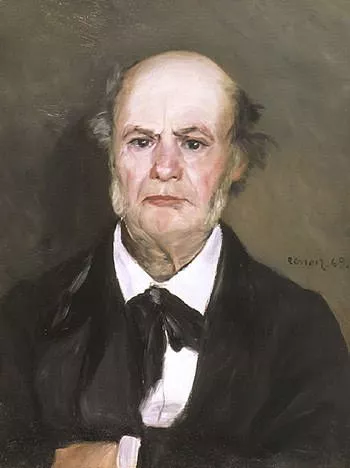
As the Renoir family started facing financial difficulties, Auguste had to leave school in 1854 and begin his career as a porcelain painter at the workshop of Lévy Frères at 76 Rue des Fossés-du-Temple. Émile Laporte, one of the workers at Levy’s workshop, used to paint in oils in his spare time. He allowed Renoir to use his canvases and paints. This led to Renoir creating his first painting. In 1858, as industrialization came to porcelain decoration, Levys were driven out of business and Renoir lost his job.
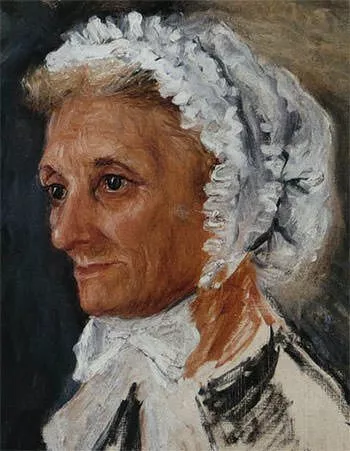
After losing his job, Renoir made money painting images on window blinds, among other things. At night, he began studying drawing at a school run by the sculptor Louis Denis Caillouette. In 1860, at the age of eighteen, he was granted permission to make copies in pencil or oil of works in the Louvre. Apart from making copies, he also painted on his own. One of his early works was a portrait of his 53 year old mother.
Education
In November 1861, Renoir’s family allowed him to stop paid artisan work and pursue his dream to become an artist. Renoir began to study art at the studio of Swiss artist Charles Gleyre. In April 1862, he was accepted for a one year course into École des Beaux-Arts, the premier art academy in Paris. While studying at the academy, he continued to take instructions from Gleyre. At Gleyre’s private studio, Renoir met Frédéric Bazille, Claude Monet and Alfred Sisley; fellow artists with whom he would be friends and share his artistic ideas.
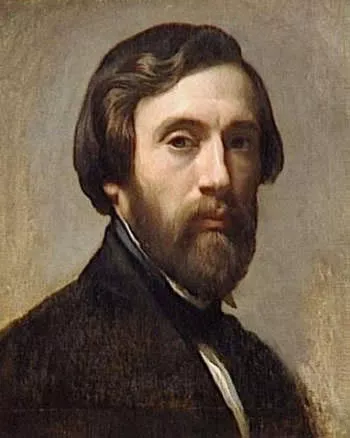
Gleyre’s studio closed in 1864 because of his health problems. The same year, Renoir’s first submission to the annual state-sponsored Salon was accepted. By the time Gleyre’s studio closed, Renoir was already following Edouard Manet, the Realist artist whose paintings were causing an uproar in the French art world. Renoir and his friends socialized with Manet each Friday evening at Café de Bade in the center of Paris. This group would later be the pioneers of the art movement Impressionism.
Impressionism
In 1869, Renoir and Monet took several trips to nearby sites including La Grenouillère, a boating and bathing resort on the Seine River, outside Paris. The two developed several of the theories, techniques and practices that would give rise to Impressionism. These included painting en plein-air (“open air”), the practice of painting outdoors to capture the effects of light and atmosphere; sketch-like technique of using broad, loose brushstrokes; and use of bright color to represent light and atmospheric effects. In 1870, Renoir was called on for active military duty in the Franco-Prussian War. He returned to Paris the following year.
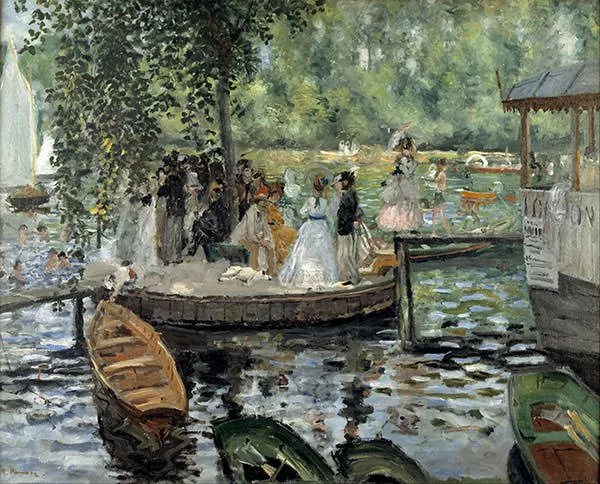
The paintings of Renoir and Monet were intermittently accepted into the prestigious Salon in the 1860s. However, as the artists started experimenting with new techniques, their works started getting rejected. This led to the two founding an independent artist’s society. They were soon joined by others including Camille Pissarro, Edgar Degas, Paul Cézanne and Berthe Morisot. The first exhibition of the society was held in 1874. The term “Impressionism” was coined in a scathing review of the exhibition by a critic.
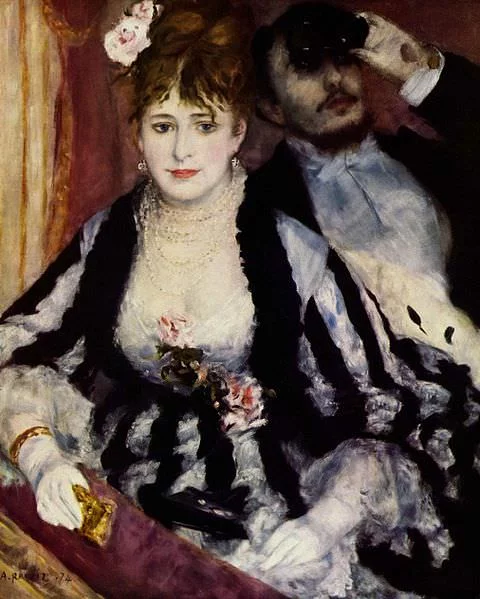
Renoir submitted 7 paintings to the first Impressionist exhibition in 1874. He also took part in the second, third and seventh Impressionist shows of 1876, 1877 and 1882. However, he declined to show in the other four. The reaction to the first Impressionist exhibition was mixed and the artists still faced financial difficulties. This led to them organizing an auction of their work at the Hôtel Drouot in 1875. The following year, Renoir painted his best known masterpiece, Bal du moulin de la Galette.
Change In Art Style
In the 1870s, the ability of Renoir as a portrait artist caught the attention of the Parisian elite. This led to several portrait commissions. The portraits he created include the famous Madame Georges Charpentier and her Children, executed in 1878. The portrait was hung at a prominent location in the 1879 Salon and was well received by most. It was a turning point in the career of Renoir as it led to further commissions and made him financially successful. His first solo exhibition was also held the same year in Paris.
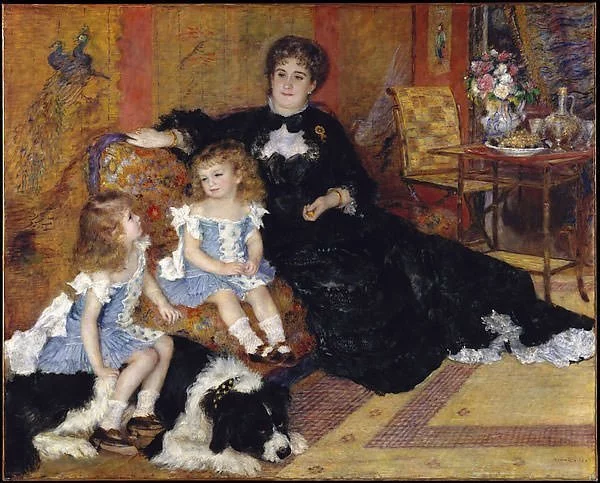
Renoir had met Paul Bérard at Charpentier’s home in 1878. A diplomat and banker, Berard became a devoted patron of Renoir and, by 1881, he began to make regular purchases of Renoir’s paintings. 1881 was also the year in which Renoir traveled to Algeria following the footsteps of the famous French Romantic artist Eugène Delacroix. Renoir then moved to Madrid to inspect the paintings of Delacroix. Renoir rounded his foreign trip by visiting Italy where he studied the works of Renaissance artists like Raphael and Titian.
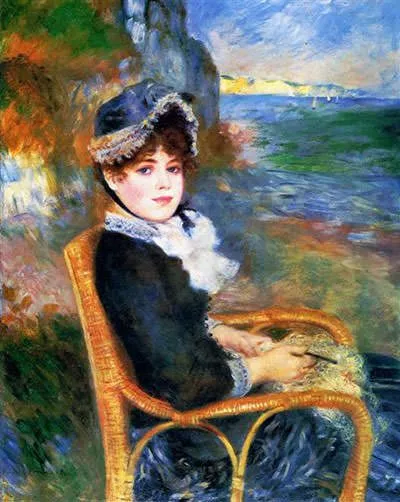
His trip abroad was a turning point in the career of Renoir. Inspired by the grand traditions of classicism, he quit the Impressionist approach and started painting in a more disciplined formal technique. Later, Renoir said about this change of style: “I had gone as far as I could with Impressionism”. After switching style, Renoir quit participating in the Impressionist exhibitions and instead chose to display his works at the Salon. By late 1880s, Renoir had changed his style again. He shifted from linear classicism to the colorist traditions of Titian and Peter Paul Rubens. Thus, from 1890s, there was renewed focus on color and sensuality in his paintings.
Marriage, Later Years And Death
Renoir met Aline Charigot around 1879 and soon she became his companion and favorite model. A dressmaker by profession, Charigot appears in several of his paintings, most famously as the woman holding the dog in Luncheon of the Boating Party. She gave birth to their son in 1885, who was named Pierre. On April 14, 1890, Pierre Auguste Renoir married Aline Charigot, who was 18 years his junior. Apart from Pierre, the couple had two more sons. Although she was much younger than Renoir, Charigot died in 1915, four years before Renoir.
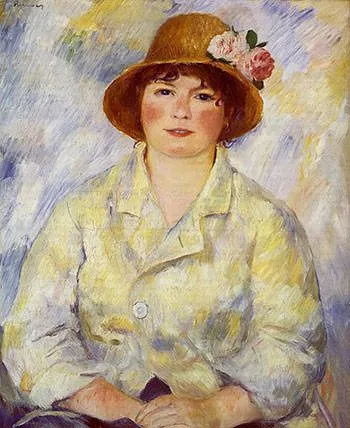
Rheumatoid arthritis is an autoimmune disease in which your immune system attacks healthy cells in your body by mistake. It causes pain and swelling in parts of your joints, among other things. Around 1892, Renoir developed rheumatoid arthritis causing deformities which grew as he aged. From 1907, he spent his winters in the warmer climate of Cagnes-sur-Mer. By 1910, the severity of the disease had increased to the extent that he was using a wheelchair at all times. Despite his condition, he continued to paint using brushes tied to his hands.
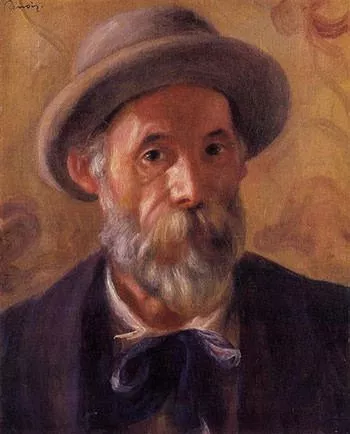
Pierre Auguste Renoir died at Cagnes-sur-Mer on December 3, 1919 due to a heart attack. Working up to his death at the age of 78, he produced several thousand paintings during his long career. During his later years, he even tried his hand at sculpture and produced around 15 sculptures. In the year 1900, Renoir was awarded the Legion of Honor medal, the highest award given by France. Renoir is widely regarded as one of the greats of modern art, not only for his contribution to Impressionism but also for the uncompromising aesthetic of his late works.
Main Sources:-
(Sep 21, 2020). “10 things to know about Pierre-Auguste Renoir”. Christie’s.
Vanderweide, Zoë. (Oct 8, 2019). “21 Facts About Pierre-Auguste Renoir”. Sotheby’s.
Kang Cindy. (May 2011). “Auguste Renoir (1841–1919)”. The MET.
“Renoir Landscapes Teacher Resource Material”. Philadelphia Museum of Art.
(April 24, 2017). “Pierre-Auguste Renoir: The celebrator of feminine sensuality”. Parkstone International.
INTERESTING FACTS
#1 He was an admirer of the Louvre in his youth and he lived to see his work displayed at the museum.
#2 Renoir is regarded as a pioneer of Impressionism.
#3 He quit Impressionism after his trip abroad.
#4 He had an illegitimate daughter no one knew of.
#5 His son Jean Renoir became a successful film director and won the Lifetime Achievement Academy Award.
#6 He is considered an Anti-Semite due to his stance in the Dreyfus Affair.
#7 He continued to paint despite suffering from severe Rheumatoid arthritis (RA).
#8 Cats’ hair were used to date his paintings.
#9 A miniature of his masterpiece Bal du moulin de la Galette sold for $78.1 million.
#10 An Anti-Israel activist named Max Geller started a well known protest against him.
MOST FAMOUS PAINTINGS
| RANK | TITLE | LOCATION | YEAR |
| #10 | The Swing | Musée d’Orsay, Paris, France | 1876 |
| #9 | Young Girls at the Piano | Musée d’Orsay, Paris, France | 1892 |
| #8 | La Loge | The Courtauld Gallery, London, UK | 1874 |
| #7 | The Umbrellas | National Gallery, London, UK | 1881 |
| #6 | Two Sisters (On the Terrace) | Art Institute of Chicago, USA | 1881 |
| #5 | La Grenouillere | Nationalmuseum, Stockholm, Sweden | 1869 |
| #4 | Dance at Bougival | Philadelphia Museum of Art, USA | 1883 |
| #3 | The Large Bathers | Philadelphia Museum of Art, USA | 1887 |
| #2 | Luncheon of the Boating Party | The Phillips Collection, Washington, DC, USA | 1881 |
| #1 | Bal du moulin de la Galette | Musee d’Orsay, Paris, France | 1876 |
TOP QUOTATIONS
“To my mind, a picture should be something pleasant, cheerful, and pretty, yes pretty! There are too many unpleasant things in life as it is without creating still more of them.”
On essence of a painting
“What seems most significant to me about our movement is that we have freed painting from the importance of the subject. I am at liberty to paint flowers and call them flowers, without their needing to tell a story.”
On significance of Impressionism
“I had gone as far as I could with Impressionism”
On quitting Impressionism
“You come to nature with all your theories, and she knocks them all flat.”
On art and nature
“The pain passes, but the beauty remains.”
On pain and beauty
“I have been for forty years discovering that the queen of all colors was black.”
On the color black
“One must from time to time attempt things that are beyond one’s capacity.”
On work
“Regularity, order, desire for perfection destroy art. Irregularity is the basis of all art.”
On importance of irregularity in art
“Photography freed painting from a lot of tiresome chores, starting with family portraits.”
On impact of photography on painting
“Art is about emotion; if art needs to be explained it is no longer art.”
On what comprises art

